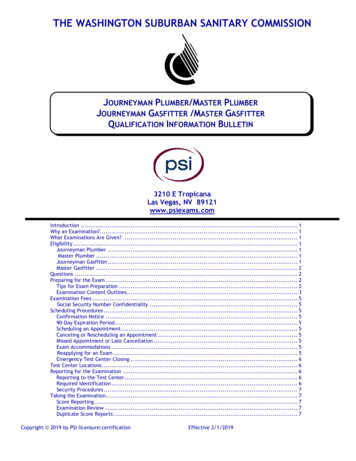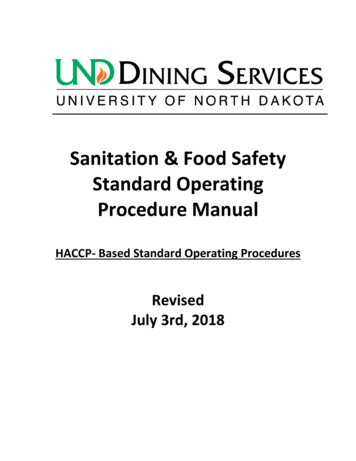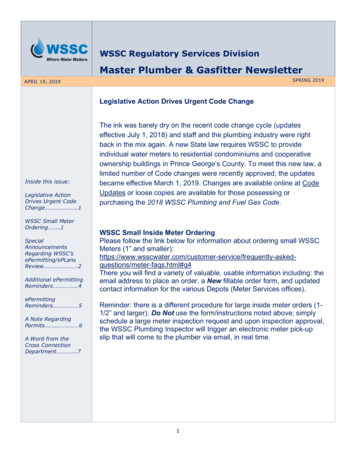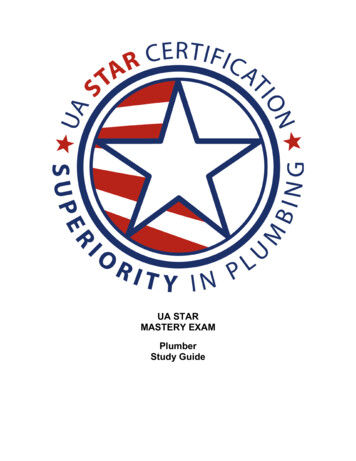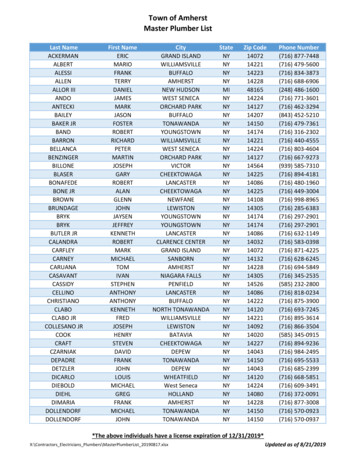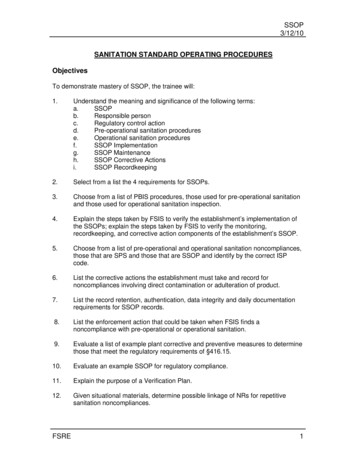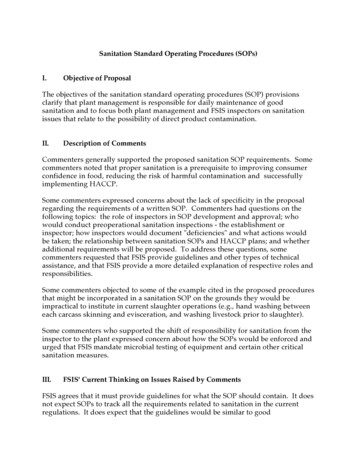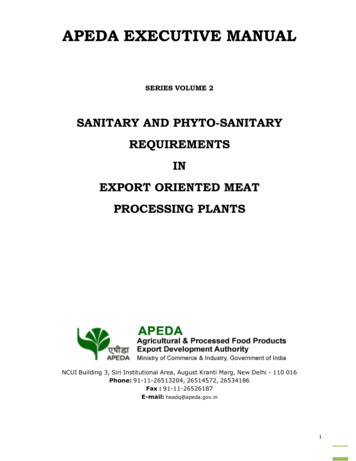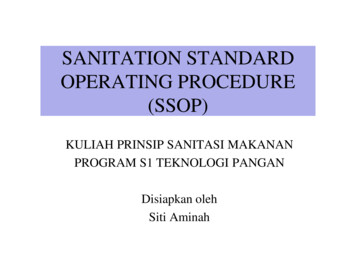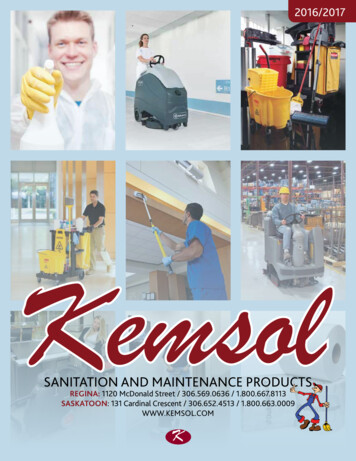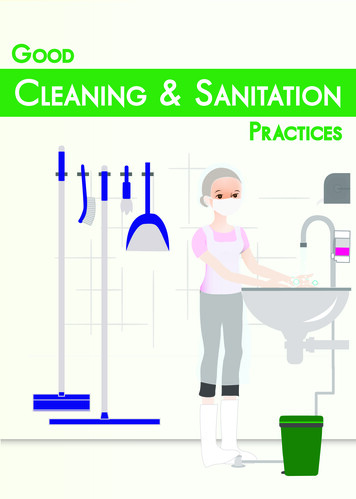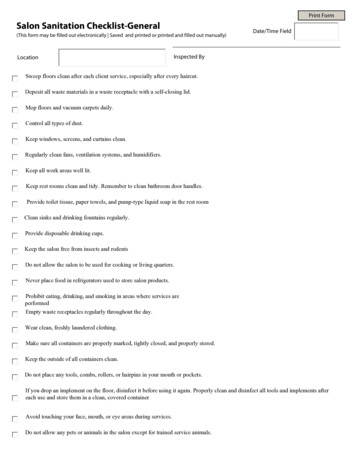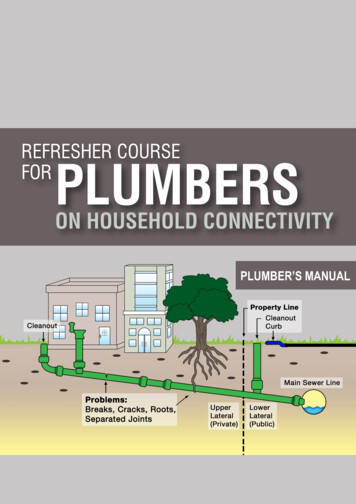
Transcription
PLUMBER’S MANUALI
Conceptualised rt“Supportto Nationalto NationalUrban SanitationUrban SanitationPolicy” Policy”Developed byAgency/CoConceptualisedbyGIZ programmeAsiaSociety for Social“SupportImprovementto National& SustainableUrbanTransformationSanitation Policy”(ASSIST)No- 9, Desika Road, Mylapore,DevelopedChennai,Indiaby– 600004el No:( 91) 448438AsiaTSocietyfor4554SocialImprovement & Sustainable Transformation (ASSIST)Road, Mylapore,Website:www.assistasia.orgNo- 9, DesikaChennai, India – 600004Tel No: ( 91) 44- 4554 eutschefür Internationale Zusammenarbeit (GIZ) GmbH2nd Floor, B-5/2; Safdarjung EnclaveCreativeTeamNewDelhi-110029-INDIAASSISTTel: 91 (0)11Development4949 5353 ServicesFax: 91 (0)11 4949 5391GIZProgramme – Support to National Urban Sanitation PolicyContactGesellschaftfuerInternationale Zusammenarbeit (GIZ) GmbHDr.Regina Dube,ProgrammeDirectorDeutsche2nd Walther,Floor, B-5/2;EnclaveDirkSeniorSafdarjungAdvisorNew Delhi-110029-INDIAJitendraYadav, Technical ExpertTel: 91(0)11Technical4949 5353Fax: 91 (0)11 4949 5391RahulSharma,ExpertGIZ Programme – Support to National Urban Sanitation PolicyDr. Regina Dube, Programme DirectorDirk Walther, Senior AdvisorJitendra Yadav, Technical ExpertJiRahul Sharma, Technical ExpertTerms of UseGIZ poses no restriction to reproduction/translation of materials. We just kindly ask that GIZ programme – SNUSP is made reference of, and that the representatives are informed. In case you wish to change or furtherdevelop the materials, please also contact the working group.The graphs and many pictures has been sourced from various sources which have been mentioned and acknowledged in the book.IIDecember 2013
FOREWORDIndia is urbanizing and very soon every second Indian will live in cities. There is anurgent need to build livable cities, providing adequate opportunities and servicesfor all, as clearly stated in the National Urban Sanitation Policy issued by Ministryof Urban Development, Government of India in 2008. The enormous urban growthand transformation requires skills on all levels. Besides of urban planners, managersand engineers there is also a need to strengthen the practical implementation on theground.This specifically applies to plumbing, as the rapid transition has put forth seriouspressure on civic infrastructure systems for sanitation. Provision of water supply services, household level connectivity to septic tanks and to sewerage systems, improperdisposal of wastewater are becoming critical to maintaining health and environmentin Indian cities. It is crucial that plumbers understand the concept and design of a city’s water supply and sewerage systemwhich will enable them to guide and install proper household connections in the city.This publication is a training manual for plumbers covering the plumbing aspects for connecting households to the septictanks or sewerage systems. I hope this manual helps to improve the capacities of the plumbers, whose impacts on overallsanitation in the city is most important.I would like to thank our partners and my SNUSP team for the efforts undertaken in addressing this important issue.Dr. Regina DubeProgramme Director – SNUSPGIZ - IndiaI
Table of ContentsLIST OF FIGURES . 2LIST OF TABLES . 4LIST OF ACRONYMS . 5INTRODUCTION . 6ABOUT THE MANUAL . 7CHAPTER 1: Basic Concepts of Plumbing .11SECTION 1: Importance of plumbing .11SECTION 2: Introduction to sewerage system .13SECTION 3: Cross connections .16SECTION 4: Water saving / conservation techniques in plumbing .19SECTION 5: Green plumbing practices .20CHAPTER 2: Overview to Public Sanitation Systems and Process .25SECTION 1: Building sewerage & its components .25SECTION 2: Connecting building drain to public sewer .28SECTION 3: Simplified sewers and small bore systems .32QUICK TEST: To recap the key points in the chapter .34CHAPTER 3: Sewerage Connections – When New Public Sewerage Network is Commissioned .39SECTION 1: New PSS network . 39SECTION 2: Alteration of building drain to PSS (bypassing the septic tank) and alteration via septic tank to PSS .40CHAPTER 4: Connecting Building Drainage to Septic Tank and Other Decentralised Systems.44SECTION 1: Septic tanks – basic definitions and workings .44SECTION 2: Connecting building drain to a septic tank .45SECTION 3: Construction / connections in septic tanks – plumbers point of view .47SECTION 4: Effluent disposal .51QUICK TEST: To recap the key points in the chapter .58CHAPTER 5: Sewerage Connections – High Altitude and High Water Table Terrain .61SECTION 1: Terrain conditions .61SECTION 2: High altitude / sub zero regions .61SECTION 3: High water table Area .63QUICK TEST: To recap the key points in the chapter .64CHAPTER 6: Manual Scavenging and Occupational Health & Safety.69SECTION 1: Manual scavenging . 69SECTION 2: The bill .69SECTION 3: Salient features of the bill .69SECTION 4: Occupational health and safety during plumbing .70APPENDIX .72REFERENCES .81GLOSSARY OF PLUMBING .831
List of FiguresCHAPTER 1: Basic Concepts of Plumbing. 9Figure 1: Cross-connection - risk to public health .10Figure 2: Untreated effluent .10Figure 3: Entry of sewer gas in to the building.11Figure 4: Automatic trap primer.11Figure 5: One pipe system and two pipe system.13Figure 6: Trap seal for sanitary appliances .13Figure 7: Gully trap .13Figure 8: Vent pipe system .13Figure 9: Example of direct cross connections.14Figure 10: Sewer line and Water Supply line in Parallel in the same trench; Sewer line and Water Supply lineone over the other in the same trench - wrong practice.15Figure 11: Minimum separation between water supply line and drainage line .15Figure 12: Concrete bedding .15Figure 13: Granular bedding .15Figure 14: Air gaps in cross connections.16Figure 15: Atmospheric vacuum breaker.16Figure 16: Flush valve with AVB.16Figure 17: Pressure vacuum breaker.16Figure 18: Every drop counts.17Figure 19: Photograph of water meter.17Figure 20: Photograph of flow control devices.18Figure 21: Grey water recycling .19CHAPTER 2: Overview to Public Sanitation Systems and Process .23Figure 22: Building drain and building sewer .23Figure 23: Invert and crown in a pipe .24Figure 24: Combined sewer system.24Figure 25: Separate sewer system .
It is crucial that plumbers understand the concept and design of a city’s water supply and sewerage system which will enable them to guide and install proper household connections in the city. This publication is a training manual for plumbers covering the plumbing aspects for connecting households to the septic tanks or sewerage systems. I hope this manual helps to improve the capacities of .
